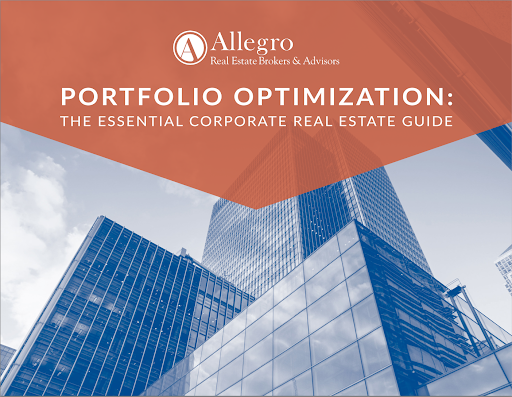Commercial lease agreements are laden with complicated provisions and sometimes ambiguous jargon. As a tenant, it’s important to take the time to understand the terms within your lease agreement, like common area maintenance (CAM) caps, in order to make the best real estate decision for your organization.
CAM is an additional, separate rent expense intended to cover any expenses involved with the day-to-day operations of the property. CAM expenses typically fall into one of two categories:
- Controllable CAM charges. Parking lot maintenance, landscaping, window washing, and anything else that the landlord has control over.
- Uncontrollable CAM charges. Property taxes, building insurance, and other expenses that are outside of the landlord’s influence or control.
As an additional rent expense, CAM charges can be included in a gross lease, or can make up one of the three “nets” in a triple net lease agreement (NNN). A cap on CAM charges limits the amount by which CAM charges can rise each year, and is presented as a percentage.
When negotiating CAM caps within a lease agreement, it’s important that tenants and their real estate advisors pay close attention to the difference between maintenance and repairs, and capital improvements.
Maintenance and Repairs vs. Capital Improvements
During lease negotiations, it’s important that tenants differentiate between maintenance and repairs and capital improvements, as there are often significant cost and contractual differences.
Maintenance and Repairs. Expenses for routine issues that ensure a building and its systems maintain their original conditions, including preventative measures to avoid building deterioration or to maintain a professional image. These may include:
- Roof leak repair.
- Window washing.
- Pest control services.
- Painting.
- Trash removal.
Capital Improvements. Expenditures that enhance the market value of the asset over the long term, perhaps well beyond a tenant’s lease term. The intent is to elevate an asset’s condition above its current or original condition. Tenants should avoid the responsibility of covering major capital improvements. These may include:
- HVAC system replacements.
- Parking lot repavement.
- Modernizing elevators.
- Roof replacement.
CAM caps are negotiated between the tenant and landlord, and thus vary from lease to lease.
CAM Charges in Gross Leases
In a gross lease (most commonly used in office properties), the landlord is financially responsible for the building, and covers all the expenses associated with its operation (including taxes, insurance, and maintenance). To help recoup some of these costs, the landlord charges the tenant a base rent per square foot and additional operating expenses per square foot for amounts that exceed the base year expenses. It is important to note that as the tenant, you will still be responsible for your proportionate share of increases over the base year amount.
CAM Charges in Triple Net (NNN) Leases
In an NNN lease (most commonly seen in industrial and retail properties), the tenant takes on all responsibility for paying part of utilities and other expenses associated with the common areas of the property.
CAM caps in triple net leases can be cumulative or compounded (also referred to as non-cumulative), and calculated either year over base or year over year.
What is a cumulative CAM cap?
A cumulative CAM cap creates a ceiling on the annual increases in CAM expenses that can be passed on to a tenant, allowing the landlord to recover any unused increases from prior years. Generally, landlords want the maximum flexibility in deciding what costs will benefit their building and prefer a cumulative CAM cap.
Cumulative CAM caps can be calculated year over base or year over year.
Year-over-base cumulative CAM cap. This is determined as a percentage of the expenses at the beginning of the lease term. They are constant every year.
- Example: If the starting base amount is $200,000 and the cap is 5% per annum, the cap for year one is 5% of base year expenses ($210,000), and thereafter rises to 10% of base year expenses to 15%, to 20%, and so on. This results in caps of $220,000, $230,000, $240,000 etc., which are charged to tenants based on their proportionate share of the building or complex.
Year-over-year cumulative CAM cap. These caps are calculated by applying the cap percentage to the prior year’s expenses.
- Example: If expenses in the base are $200,000 and the cap is 5%, the cap for year one becomes $210,000. If actual expenses for that year are only $205,000, the cap does not apply. The next year’s cap becomes 5% over $205,000 (or $215,250). This repeats each time the actual expenses fall below the cap.
What is a compounded CAM cap?
Non-cumulative, or compounded, CAM caps prevent unexpected increases in CAM expenses, thus allowing tenants to more accurately budget their real estate expenses. A non-cumulative cap sets a ceiling on annual increases in CAM expenses and does not allow the landlord to recover any unused increases from prior years.
It can be calculated year over base or year over year.
Year-over-base compound CAM cap. Calculated as a percentage of the prior year’s cap. This difference causes the cap to rise slightly faster (allowing more expenses).
- Example: If the starting base amount is $200,000 and the cap is 5%, the first year’s maximum is $210,000. However, because this is now compounded, the next year’s cap is 5% over the first 5%, or 5.25% (making the compounded increase from the base 10.25%, or $220,500). Each subsequent year’s cap would be calculated as a percentage of its respective prior year’s cap, making the caps in this example 15.76%, 21.55%, and so on.
Year-over-year compound CAM cap. These caps are unusual and work by allowing the increase to compound each year, but such an increase is applied to the prior year’s expenses.
- Example: Here, the 5% cap that would apply in the first year grows to 5.25% the second year, 5.51% the third year, 5.78% the fourth, and so on.
What do CAM caps mean for tenants?
Tenants have the ability to negotiate the CAM expenses and CAM caps within their lease agreement before they sign the lease. As a tenant, you should want CAM charges to be defined narrowly to ensure your occupancy costs remain low and that CAM charges are capped to incentivize the landlord to operate efficiently. In addition, caps set on CAM expenses allow tenants to accurately budget for their overall real estate costs.
Expense caps in commercial lease agreements can turn confusing quickly when not clearly defined and understood. Consult with an experienced real estate advisor to ensure that you and your landlord are on the same page when it comes to CAM caps
Assess the Health of Your CRE Portfolio
Proper lease management is just one factor that impacts the overall health of your commercial real estate portfolio. Critically evaluate all aspects of your CRE with Allegro's new (free) CRE Score assessment.
CRE Score’s algorithm assesses your ratings before generating a customized, comprehensive report with actionable insights and relevant resources that help you optimize your commercial real estate portfolio. Click below to get started.








